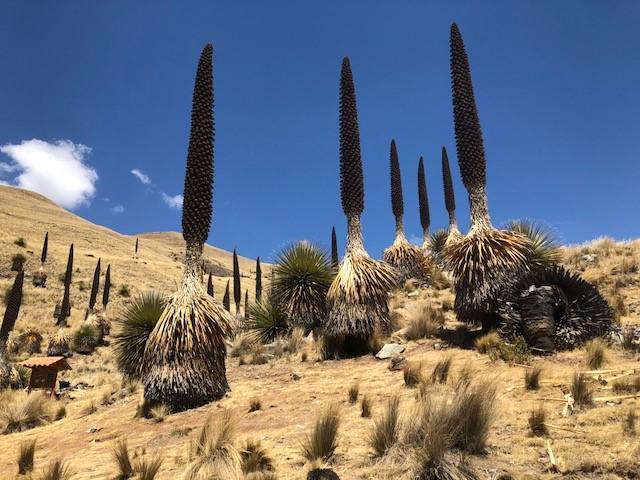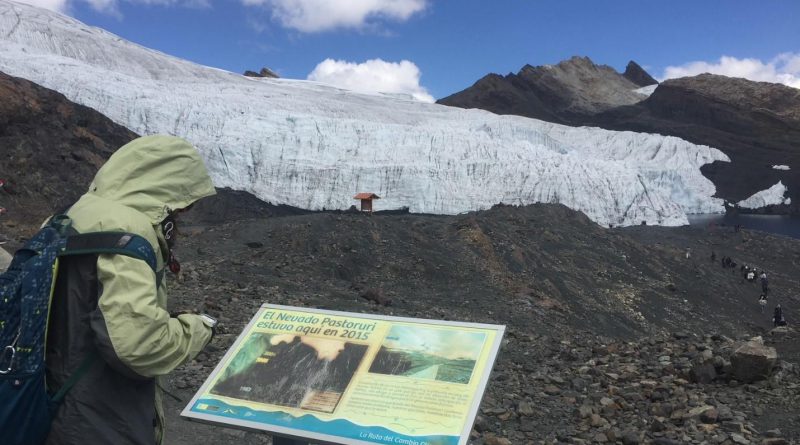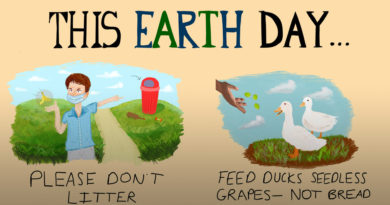The Dangers Of Glacial Retreat
The Ancash province of Northern Peru is well known for the “Cordillera Blanca” mountain range which harbors Huascarán, the tallest mountain in Peru and in the entire tropics. Huascarán towers around 6,800 meters above sea level, and the Huascarán National Park (HNP) is the only region in the entire tropics that supports glaciers and permanently snow-covered mountains.
However, “Caminata Cambio Climatico,” or the Climate Change Walk through the Pastoruri glacier located in HNP, takes us through a journey of glacial retreat—where the end of a glacier does not extend as far as it once did in the past. Pastoruri is located 5,200 meters above sea level spanning an area of eight square kilometers and now retreating at an unprecedented rate. A group of biologists, along with my husband, son, and I signed up for the trek in March of 2019 to observe and learn about this fragile ecosystem, with an opportunity to feast our eyes on glaciers and glacial lakes in Huascarán National Park.

PHOTO COURTESY OF SONALI SAHA
As one walks the two miles to the glacier from the base, the installed display plaques document the fateful one-way trip of the glacier from its past to the present, informing us that the glacier has retreated 500 meters since the late 80s. Through the permanent melting of the glaciers, one can observe a lake formed at the boundary of the glacier. As the glacier retreats, the lake continues to expand and is being studied by scientists. These lakes make the local Quechua people loom with serious concerns over a glacial lake outburst flood which may be triggered by the high pressure of water contained precariously by moraine and the glacier walls.
These glaciers are permanent sources of streamflow in the dry season, draining valleys and rolling hills which are home to native Páramo—alpine tundra ecosystems. The Páramo of the Pastoruri region are host to high native plant diversity including Puya raimondii, also known as queen of the Andes, the largest species of bromeliad, which reaches up to 15 meters in height.
This plant species is restricted to high alpine ecosystems of Peru and Bolivia. The entire ecosystem was kept alive by glaciers and their gentle seep through the dry season, until global warming began to take its toll and led to large amounts of ice melting permanently and causing flash floods, drastically reducing dry season streamflow.
As a scientist who has worked in the Everglades National Park to study the effects of sea level rise, the crackling glaciers and the power of gigantic ice and snow packs left a mark on me. I could not help but think of the suffering local Quechua communities that have lived sustainably in the Ancash region for eons.
Is it not the responsibility of every one of us to think and take measures to reduce natural resource waste? Simply understanding our water and carbon footprints will make us more aware of the resources we consume.
If people across the world made conscious decisions and started with simple measures, such as preventing food waste at all costs, we could collectively save millions of gallons of water in just one day. This could be a great start. As a professor of Environmental Sciences, I will attempt to implement these habits with my students.




